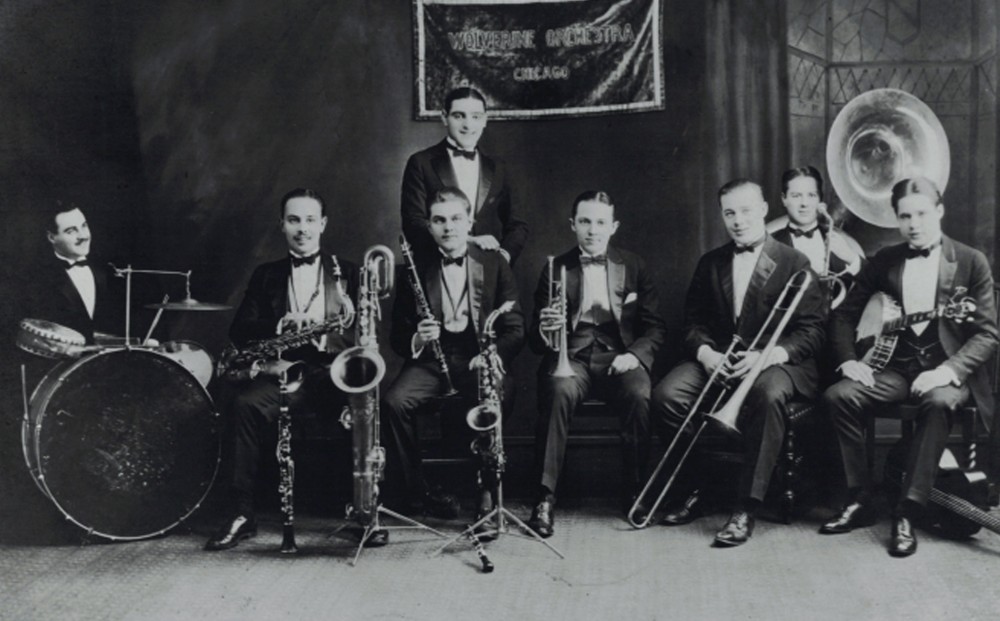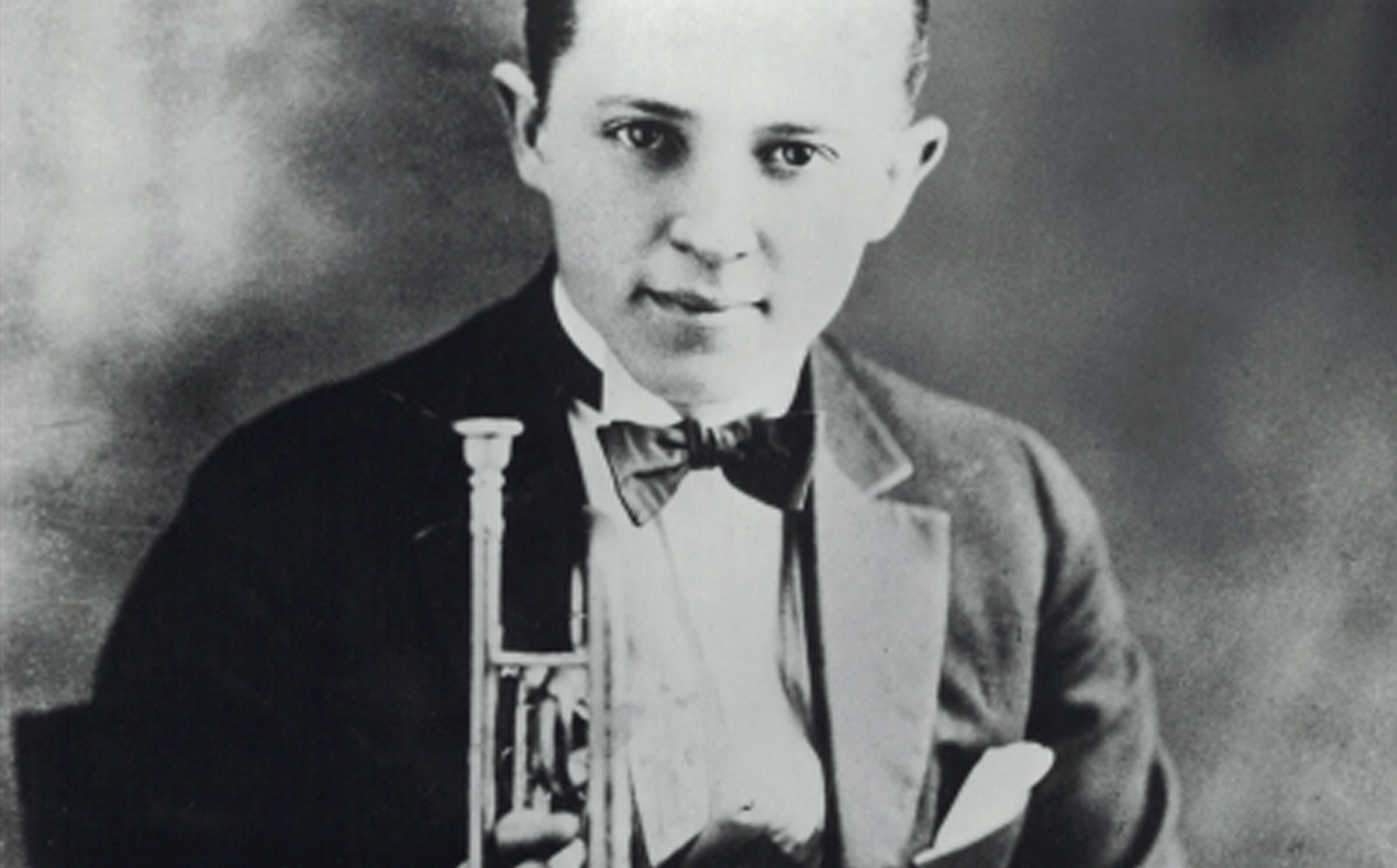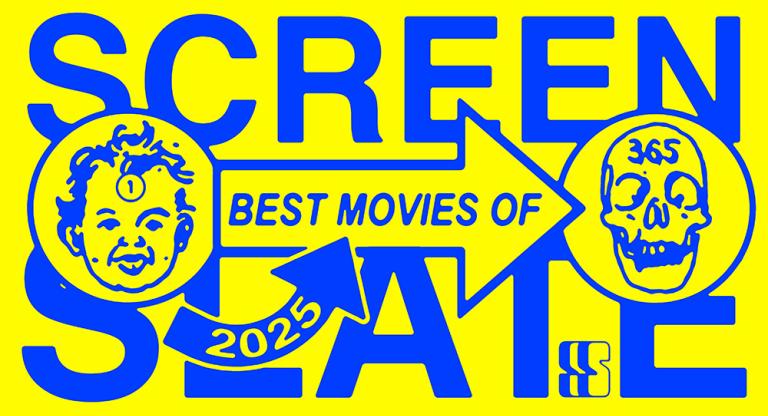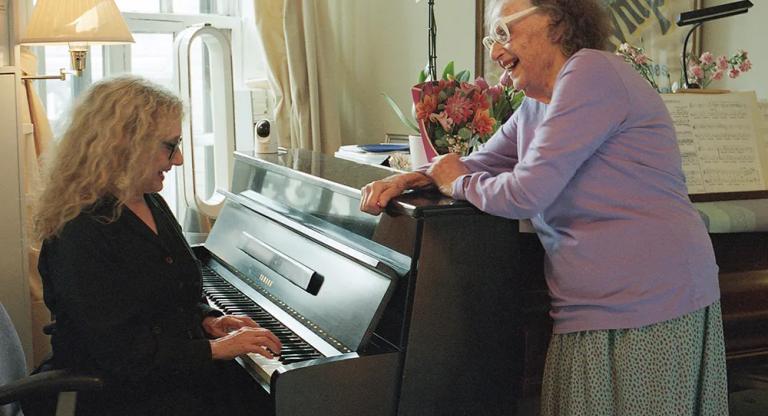Unavailable for almost 40 years, Brigitte Berman’s Bix: Ain’t None of Them Play Like Him Yet, now showing at Film Forum, — about cornet player Bix Beiderbecke — is nothing short of a documentary miracle. As Beiderbecke was only captured in a few frames of film footage before his death from alcohol-related pneumonia at 28, Berman’s composite portrait draws on years of archival research and untold hours of interviews with his surviving contemporaries, by this time (the late 1970s) in the twilight years of their lives. (Of particular interest is Berman’s access to Bix’s friend Hoagy Carmichael, among the most important songwriters of the pre-World War II period; he died just months after being interviewed.) Bix is ultimately a story about a restless creative spirit against mounting odds — the jealousy of other musicians, the Great Depression, grueling tour schedules, alcoholism, his disapproving German immigrant parents back in Davenport, Iowa. (Film Forum’s synopsis calls Bix “the Kurt Cobain of his day.”) Berman also revisits locations from the musician’s life, including his final home in Sunnyside, Queens, using a kind of make-believe impressionism to suggest a world dissolving around Bix ahead of his untimely death, returning pointedly to his jaunty yet melancholic compositions like “Cloudy” and “In The Dark.”
Like Berman’s subsequent documentary about clarinetist Artie Shaw, Bix is above all a testament to the filmmaker’s skill as conversationalist. It’s the opposite of your typical musty talking-head history doc: richly textured, full of hilarious anecdotes, tender, and ultimately heartbreaking — essential viewing even if you don’t happen to be an aficionado of Depression-era hot jazz. Newly restored, Bix is currently without distribution — so don’t miss your chance to see it this week at Film Forum. I was fortunate enough to speak to Berman about her unique approach to documentary, the disparity between fact and myth, and her own relationship to Bix’s music.
Steve Macfarlane: My understanding is you were very young when you made this film. How did you become obsessed with Bix?
Brigitte Berman: I was working for CBC in Toronto. I loved research. One day a boyfriend of mine brought a bunch of Bix records to me, as a present. He said, “You gotta listen to this guy.” He knew I made documentaries. I listened and was absolutely caught by Bix’s playing, it was magical to me. Magical. So I asked, “Who’s made a film about him? I would love to see it.” I discovered nobody had, so that’s when I started. It took quite a while to make Bix, three and a half years.
And in the Q&A last week you stressed that your research is all primary.
I do both, primary and secondary, but I prefer to get it straight from the horse’s mouth. I was fortunate in that many people who knew Bix personally were still alive, they remembered him very very well. He made a huge impression on just about everybody, including people who only met him once. First I would interview them over the phone, then go and see them in person, making research trips. I spent quite a number of hours with each of them, going over things I had asked them already. When the story did not change, I felt that I was on solid ground. They kind of corroborated each other’s stories as well. With that clear picture of Bix in my brain, and in my soul, I set about making the film.
It’s impossible to talk about Bix without using the word “haunting.” Or “haunted”?
Bix comes through very clear in the reminiscences, the photographs. When Charlie Davis plays “Cloudy,” you can hear Bix speak in the music. But it’s not an obvious kind of seeing and knowing Bix — it takes a little work. If the film were made today it would be based on hearsay, on interpretations, on people’s thoughts about the late Bix Beiderbecke. I’m really pleased the film is coming back, but this is also why I want to find a distributor: this is as close as you’re gonna get to Bix, beyond listening to the music. For example, people kind of like to believe — it’s “cooler” to think — that Bix died in a drunken stupor. But it’s not the case. I think it’s really important to clarify what is and isn’t true. It’s easy for people to fit their own thoughts into it, whatever they want to believe happened. We all know if a story gets told to one person and it gets retold twenty times down, it becomes a totally different story.
One of my favorite moments in the film is Bix’s friend Charlie Davis. He says the song “Cloudy” was never recorded in Bix’s lifetime, but then says he “recorded it in his mind,” then plays it. Watching him re-access those memories is very powerful, and then your film is probably the only record of that song that’s out there.
There’s nothing as interesting to me as the human face: the eyes, the expressions. When you’re sitting and talking with somebody, you don’t have images flashing back and forth, all over the place. You listen to that person. I don’t like to make the film completely out of talking heads — I believe in images and I believe in creative visuals, of course, but to get at the emotional stuff? I really believe you need a face telling you the story.
Tell me what surprised you or shocked you during your research into Bix.
I guess it occurred during Roy Maier’s interview, when he talked about Bix’s delirium tremens. I realized how severe his alcoholism was at the time. How scary — to be like that, for people to find him in that condition. As Matty Malneck said, he drank first thing in the morning. The extent of his alcoholism was a shock to me, and again, looking at it — when you think about the changes he made in the last year of his life, it’s like a swimmer who thinks he’s gonna drown, comes back with incredible full force, trying by all means trying not to. Bix came up from that and grabbed a life jacket in his relationship with Alice. Reading that in his letters meant a great deal to me. They are as close as I could get to hearing Bix speak.
Another devastating moment in the film comes when it's revealed that Bix sent each new pressing of his music home to his parents in Davenport, then visited them years later and realized they had never even opened the records. Did you encounter any pushback from Bix’s family? An “official” narrative versus an actual one?
The only person who was around at that time was his sister. I interviewed her and there was no problem. In fact, I got the sense there was a certain negligence towards her brother — the love was not as deep as I would have expected. There isn’t a great deal of love in her face, when she speaks. There is not the same kind of love you see in Charlie Davis or Bill Challis or Fritz Putzier. I saw Bill Challis three different times and made him aware of who I was and what I wanted to do with the film. He was incredibly protective — he didn’t want Bix to come off as a drunk, because he understood Bix wasn’t a drunk. Louie Armstrong didn’t do a lot of interviews about single musicians, but he did one about Bix Beiderbecke — that speaks volumes. Those are the facts that matter to me as a researcher. Now these people are all gone. If they were here, we wouldn’t have these legends spinning around about Bix Beiderbecke. I see people coming forward, who were part of his family. I think it’s great that more people have the Beiderbecke last name, but it’s also a bit like putting their hook into fame. I wonder how much is family and how much is fame.
People’s thirst for fame seems as pernicious now as ever.
Absolutely. But the family were not bad people, I must say. They did what was right to them at that time. They did not care as much as Bix wanted, they never opened his records. The director of the Bix Beiderbecke museum in Davenport claims his family liked his music, they encouraged him. It’s baloney. Bix’s childhood friend Esten Spurrier was there shortly after Bix found those records. Who are you going to believe? I believe Esten, thank you.

I also wanted to ask about the staged sequences. They don’t quite fit the description of “dramatic reenactment” but they have a handmade feel, grasping at a truth that falls between facts and records.
They’re very — they wouldn’t fit into the film if they were big budget recreations, nor could I have afforded them. I wanted the feel of the times, visually. I had a musician playing Bix at a very early age, and I had a musician playing Bix in the final year of his life. It was very important to me that it be a musician, because the way a musician carries a cornet, it’s different from a person who doesn’t play. That seemed very real to me. I wanted to give a sense of this lonely figure in Davenport, in New York. A fleeting glimpse of what it might have been like. And it was very important to me that you don’t see his face.
You also deploy images of paintings by Edward Hopper — slow zooms, pans, dissolves. Was that always intended to go in the movie?
No. One of the few dinners I had time for while editing the film, I was at a friend’s place, and while he was making dinner I leafed through a book on the table, of Edward Hopper’s paintings. In my mind, everything was about Bix at this time. It kind of clicked, like, these paintings feel like that time in America, in New York: a feeling of isolation, of being on the road, city views, the bleakness. I immediately decided to incorporate them, clearing them and sending a photographer to shoot the original paintings.
Of course, when the musicians talk about the ruggedness of touring on the road, I’m reminded that these are times of hardship. The movie is also about that, as well as about industrialization, the growth of these major cities, jazz, radio …
Absolutely right. It probably has a feeling of the pandemic as well, now.
Why was Bix unavailable for so long?
Well, it opened in New York at a special screening for all the people who appeared in the film, those who had helped me, some press. It went to a number of film festivals, it was sold to Channel 4 in the UK, it had a theatrical release in Scandinavia … For some reason Europeans kind of plugged into it more than Americans. In 1981 documentaries were not as popular as they are today — they were still in their own niche. I really wanted a distributor who would nurture it. And then I got very busy with the Artie Shaw film. The making of a film is always the most exciting part. Maybe I should have hung on a little longer, searching for the right distributor — I take responsibility for that. Then I continued making other films, and you know, it wasn’t until the pandemic that my mind went back to the Bix film. I thought, “Well, I’m not gonna live forever. I should make sure Bix is in the 21st century.” So I started to go about bringing it up to date, for a new audience. It took us nine months. I worked with my sound designer Daniel Pellerin and my visual magician, Oren Edenson. They loved the film as well and they were just amazing, patiently working with me and my perfectionism. But I did not replace anything that had been there before with anything new. The film is what it was in 1981, and it’s the same film that Bix’s friends saw. That was important to me too. It’s like, you have an antique necklace — you don’t want to put new beads on it, you want to keep it the way it was. It was recognized like that long ago.
The film is celebrated, too, for including an interview with Louis Armstrong.
For me primary research means getting in touch with the person, or at least as close as you possibly can. A recorded phone call with Louis Armstrong — those are the goods themselves. The way I would put it is, it’s even better than primary research, it’s the up-close-and-personal research. That’s how the film’s sub-title was born, and that really struck me — a Black musician praising a white musician like that. In those days, jazz musicians were really friends with each other, colorblind — thank God. They cared about who they were inside, as people, and what the music was like. Louis and Bix were good friends.
At Film Forum you describe “the door of creativity” and how Bix was — unlike most — someone whose door was wide open.
I think I got that from Rembrandt. It’s something he said about creativity that made me look at it like, we all have that creativity inside. There’s a door, and it’s up to us, really, how much we want to open it. For some it’s completely shut — I won’t mention their names. Others, it’s a little open, it’s more open. And then there are really rare individuals for whom the door is flung wide open, it can’t get any wider. Bix, to me, is one of those people.
So how do you describe what happened to Bix? He was exploited? And why? Because they were jealous of his talent?
Jealous, or they loved him too much, loved what he did too much. In that same interview, Armstrong says they killed the goose that laid the golden egg. Looking at Bix, he was cut off from his family, his friends were other musicians, he had closer friends who really cared, but the ones around him were really hangers-on, in New York, other musicians, some of whom cared, some of whom didn’t. Bix never acquired the kind of discipline that one acquires in a structured school or university. There’s a self-discipline that gets built up in that process, and Bix didn’t have that. He was a natural, completely. What he heard, he played. He didn’t even learn how to read music very well because he could just echo everything. His gift was remarkable, but in a sense it helped his undoing, because he had no self-protection.
I guess there’s the risk of false hindsight, or of fatalism, to say that Bix’s death was some kind of inevitable conclusion. The film suggests that it’s tragic because it wasn’t.
It’s important to set the record straight about Bix’s final days, what they were like. In the end, he did meet a girl — he was going to get married. That’s verified by the letters he wrote home. It’s also verified by Hoagy, who saw him during that time, who says clearly in the film that Bix didn’t drink when they visited him. If he was into drinking an awful lot in those days, he would have drank at Hoagy’s — but he didn’t. If he was happy with the way his life was going, he would have stayed at the 44th Street Hotel — but he didn’t. He moved outside of Manhattan, he took the subway to a much quieter neighborhood, a lovely building. You put the two places side by side, and you get a very different feel. This is where he chose to live. So there was that, inside of Bix, that wanted to live in a place like that, wanted to get married, wanted to get back in touch with his parents. Bix was changing, and I just don’t believe the stories that his apartment in Queens was full of empty bottles. He wanted to get back on track. People would like it to have been the other way, not because they know it was that way. I’m very fervent in this.
Finally, a cliffhanger, because you told me there is a hope of restoring and rereleasing the Artie Shaw film as well: Bix was obviously not present for your filmmaking. Artie Shaw is, in that film, extremely present — I remember watching it at MoMA long ago, feeling like I was in the palm of Artie Shaw’s hand. Another x-ray of creativity, but also the monstrous side.
Think of a sculpture. With Bix, you create the sculpture out of found objects. As established, it’s based on primary research, trying to get as close as possible to the heart, the soul, the mind of Bix, who you’re talking about. With Artie Shaw, you’re starting with a giant block of stone and the person is in there, so you’re chiseling away at it with a hammer. That’s the best way I think I can describe it.



